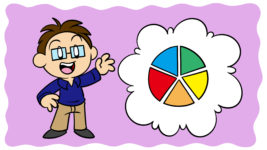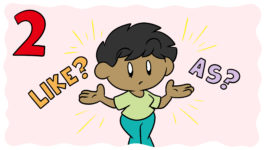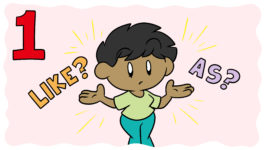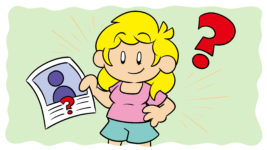Ask most authors for their advice on storytelling and, sooner or later, they’ll get to the subject of conflict. For many writers, conflict is the basic unit of story – the thing that turns a series of events into an actual narrative – often more important than setting, characters, and even narrative cohesion. After all, you can lose all of those features and still write something that grips the reader.
Because of this, it stands to reason that conflict may be the single most important aspect of storytelling, but does that make it essential?
Can you write stories – even great stories – without including conflict? That’s the question we’ll be exploring today.
Do you need conflict?
Ursula K. Le Guin is one of the most notable advocates for the idea that stories can exist without conflict.
Le Guin is a successful storyteller and even a scholar of the craft, so if she says you don’t need conflict to tell a good story… well, you kind of have to take her at her word.
Modernist manuals of writing often conflate story with conflict. This reductionism reflects a culture that inflates aggression and competition while cultivating ignorance of other behavioral options. No narrative of any complexity can be built on or reduced to a single element. Conflict is one kind of behavior. There are others, equally important in any human life: relating, finding, losing, bearing, discovering, parting, changing.
Change is the universal aspect of all these sources of story. Story is something moving, something happening, something or somebody changing.
– Ursula K. Le Guin, Steering the Craft: A Twenty-first Century Guide to Sailing the Sea of Story
So, there you have it. Stories don’t need conflict, and it’s just one option among a series of other human experiences for driving a compelling narrative.
We dealt with that question pretty quickly.
Is ‘conflict’ always external?
Of course, if that was the end of it, we’d have simply written an article about how smart Le Guin is. So what’s wrong with her summary of the issue?
Not much. Le Guin makes a valid point that we can draw inspiration for art from many different sources, and that choosing the most aggressive option only encourages the worst aspects of human nature.
The thing is, when I talk about ‘conflict’ as an editor, I don’t use it in the same way as Le Guin. Instead, I understand ‘conflict’ to mean not just external conflict between people, but also internal conflict within a character. This could be a conflict within the reader, or simply the struggle of moving from one state to another.
Conflict is not about central characters fighting
The old rule of storytelling is that ‘A happened then B happened’. This isn’t a story.
A better story is that ‘A happened but then B happened’. In this version, the two events rub up against each other, and there’s the implication that B might change the effects of A, or work to a different goal.
In this way, ‘conflict’ isn’t necessarily about two people with opposing goals fighting. It’s about not following a straight line from beginning to end. If the story ends as it began – with no disruptions or changes – then you tend to end up with a tale so prosaic that it’s hard to really call it a story.
This is true even in stories where the goal expressed at the beginning is accomplished by the end. It’s the challenges along the way that make the journey noteworthy. If Red Riding Hood isn’t confronted by the Wolf, there’s no real narrative to her story.
In fact, as a mental exercise, take a moment to try removing the Wolf from the narrative while still telling a compelling story.
I’m guessing that while many of you managed to make the story compelling again, you did so by introducing some other form of conflict; some event that acts contrary to the protagonist’s goal.
Maybe Red Riding Hood got lost, or now she’s selfish and doesn’t want to make the journey, or when she gets to the cottage Granny has collapsed – any external forces that add a struggle to the unimpeded delivery of baked goods.
Conflict comes in different forms
Imagine a story that describes a couple breaking up when they both know the relationship has run its course.
Both characters intend to break up, and we don’t need to add an obstacle to make that interesting. Such an obstacle could be that one of them doesn’t want to split – that would certainly add more intense conflict – but the more realistic conflict here is in the complexity of emotion. It lies in depicting two people who are scared to make the decision they think is necessary, who are worried about hurting each other, who want to be understood.
The drama comes from them being conflicted in both their feelings and their actions, even if they never so much as argue with each other.
Even a rock can create conflict
Now imagine a story about a rock being slowly eroded over the years. Here, we’re definitely not seeing an external conflict, no natural disasters. The rock isn’t fighting against its erosion – it’s not even a sentient being, it’s just a rock being worn down.
But humans can grow attached to pretty much anything, and so the conflict in this story is the vague angst of change; the resistance we feel to change, even change that isn’t inherently bad, and how that connects to our understanding of our own finite mortality.
Here, the conflict is in the reader.
The events of the story occur uninterrupted, no-one is trying to stop them or even being hurt by their occurrence, but something deep within the reader doesn’t want what’s happening to continue.
As with the couple in the first story, this emotional resistance could even exist within a larger sense that the change in question is for the greater good, but even here, there’s conflict.
Significant change requires conflict
So, is Le Guin is wrong in her assertion?
Not really, but she definitely uses ‘conflict’ in a different sense than most writers intend it. When she describes ‘relating, finding, losing, bearing, discovering, parting, changing,’ it’s hard not to think that conflict exists within all of them. ‘Losing’ and ‘parting’ can exist without conflict, but isn’t it conflict that makes them matter?
It’s only when one doesn’t want to lose something that its loss becomes significant.
You could even apply the same logic to ‘finding’ – doesn’t this discovery become significant only if it adds something new to your life?
It’s in ‘bearing’ and ‘relating’ that conflict feels least present, but it’s there if you look for it. Again, we can do all kinds of things that technically fulfill these requirements, but narrative worth comes from finding some significance in them, and that significance emerges from change.
Bearing something becomes narratively interesting when it alters who you are or how you understand the world, even in small ways, and the same for relating. If relating to something or someone doesn’t change how you’re feeling – doesn’t even reaffirm a part of you that was struggling – then it’s almost certainly not strong enough to support a narrative.
Change creates conflict
Change involves moving from one state to another and, at least in narrative terms, that means conflict.
A hero strikes down a villain, events change a personality, a single act changes an emotional state, but they all come down to a force acting counter to a situation.
As Le Guin says, ‘Change is the universal aspect of all these sources of story. Story is something moving, something happening, something or somebody changing,’ and while significant change can certainly happen without physical fighting, it can’t really occur without at least some degree or type of conflict.
The lens of conflict
We’re throwing out Le Guin’s opinion, then?
Well, while it’s certainly possible for an author of her stature to be just plain wrong about something, that’s not the case here.
First, she’s clearly using her own definition of ‘conflict’ that’s more literal than is intended by most authors when they discuss it in a narrative sense. Where ‘conflict’ means ‘direct opposition’ or ‘fighting,’ she’s entirely right, and if you’re a budding author then it’s worth looking into how to create both conflict and change in your writing without necessarily needing an antagonist to oppose.
But beyond even that, Le Guin makes a deeply valuable point, which is that the language of conflict and disharmony can be more influential than we intend – even when it’s not used literally, it can still encourage a particular perspective that, as Le Guin writes, ‘inflates aggression and competition while cultivating ignorance of other behavioral options.’
The story of the eroding stone, written to invite regret on the reader’s part even as the stone knows nothing, does involve a form of conflict. Indeed, for that story to work as described, the reader has to be invited to regret what’s happening and want it to stop.
If the reader doesn’t respond to the author’s efforts to invite emotional conflict, there is no story. It would be pointless to anyone who didn’t engage with it on that level.
But is conflict the most useful lens through which to view this story? While it’s an essential aspect of what the narrative is doing in order to tell a story, isn’t Le Guin right that this artistic endeavor is more about the act of relating?
Isn’t the writer going to have an easier time writing something great if that’s the approach they take?
Art is made of exceptions, so there are ways of telling stories without conflict, but they’re novelties. While it’s fair to say that significant change is inextricable from some form of conflict, it’s also true that – as Le Guin suggests – conflict isn’t the only lens through which to view and write change.
By widening the way we consider and discuss narrative, we can tap into wider human experiences and bring more variety and understanding to our craft.
What’s your response to Ursula K. Le Guin’s thoughts on conflict in narrative? Let me know in the comments.
Check out How Conflict Will Transform Your Limp Story Into A Page-turner for more on using conflict to enliven your writing and 6 Secrets To Writing A Thrilling Argument for a way that (contrary to the conclusion of this article) thinking about arguments as fights can help you write them in a far more compelling way.






2 thoughts on “What is Conflict in a Story, and Why Should I Care?”
Hi. I so appreciate this article. I teach acting and one of the biggest challenges is to help actors understand that “conflict” does not have to be big, or scary. It does not have to be negative, nor angry. I look forward to sharing the link to this – thanks again!
This is retconning Structuralists by quite a bit and ignoring what ELSE Le Guin said in a bid to try to cover up the fact that conflict was not thought as the center of stories for the majority of 200,000 years of human history.
Conflict as the story driver was invented by Percy Lubbock in 1921, Craft of Fiction as a way to make it simpler to analyze stories, which was then pushed back on by EM Forster, and Virginia Woolf. This created a split between the structuralists and the Modernists as we know it, which persisted through the 1990’s, but a referendum was started in the 2000’s by writers pushing for a more global view.
The other story drivers in the world have been Morality, Development, Emotionality, repetition and memory.
Aristotle through Shakespeare is morality. Adam Bede is Morality.
Emotionality was argued by John Locke and is part of Gothic.
Bible/Torah was based around mostly morality, but also memory.
And that’s just Europe. Wait until you get to the 19th century.
The idea that conflict is the only way is pushed by Structuralists as a way for them to mostly hate on white women and quietly hate on other marginalized groups.
This retconned explanation that “OMG, but there are other kinds of conflict” entirely ignores the Literature and history of Conflict Narrative and silences the minority groups that pushed steadily against it as invalid. (There are no other ways, they say–or even worse, say “You’re confusing conflict with a problem” in a gigantic gaslight) Why is plurality of story so difficult to fathom?
Women have largely pushed against it in literature, particularly saying that emotionality and development should be core values of story. And conflict can feel hollow as a story driver. Black People, particularly Toni Morrison.
But actually citing the alternatives and the roots of why conflict wasn’t forever, would feel like a total threat to the pro-structuralists because then you’d actually have to let go and realize that diversity of story driver isn’t a problem at all since it’s always existed. But the flattening of it is highly problematic.
This is why one must know the history of story itself, no? And also give proper citations when they are due so you can see the monster forming before you and the lies you’ve been fed.
I have particular feels for poor Mr. Bertolt Brecht who accidentally contributed, but would hate the final monster, especially since all the credit for his ideas went to Aristotle, whom he loathed. Also for Selden Whitcomb, who argued extensively for the plurality of story who got subsumed. And for Percy Lubbock, who, later came out as gay, all of his innovative work was given credit to French Structuralist Ronald Barthes. None of the contributors in the end would be happy with the final result, I think. But you, as a writer should know that rather than pushing back on white women pointing it out and feeling threatened by the diversity of story that exists before Lubbock opened his mouth about conflict.